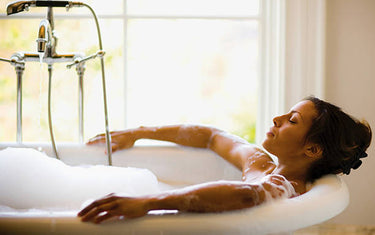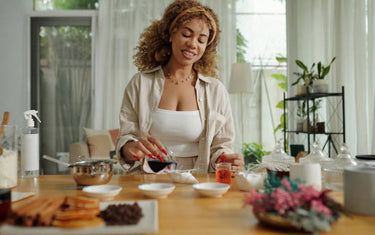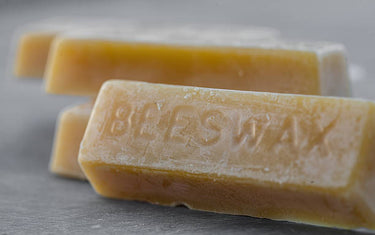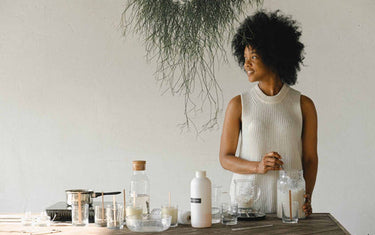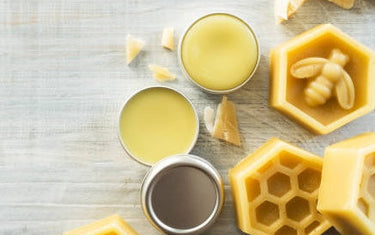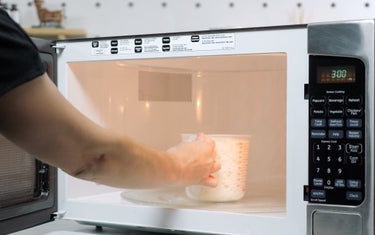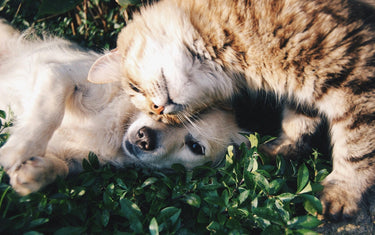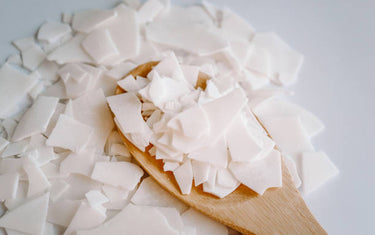5 min read / 19 January 2024 / yasmin sharp
How to Make Massage Candles at Home
Create your own scented candles that promise relaxation and a touch of romance.
Share this post
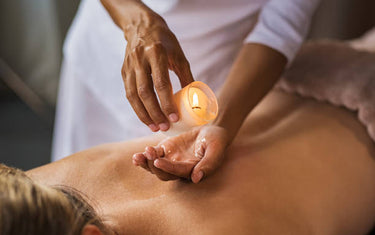
Whether you want to unwind and relax with a warming massage or planning a romantic evening with a loved one, massage candles bring luxury, comfort and style into the room for you to enjoy.
We’ve put together what we believe is the best recipe for massage candles for beginners, giving you an easy-to-follow guide that covers all the equipment, ingredients and step-by-step instructions you need to get started.
What is a massage candle?A massage candle can be a wonderful accessory to use as part of a massage routine, helping to set the right mood for relaxation. Scented massage candles fill the space with their unique fragrance and when the oils are at the right temperature it can also be used to massage into the skin. Candle massages can be relaxing and romantic, making them something that works for couples and people who are single. |
What type of wax is used for massage candles?
Massage candles typically use soy wax as the primary base due to its low melting point and skin-friendly properties.
Soy wax melts at around 50°C (122°F), which is just above body temperature, making it comfortable and safe for skin application.
This low melting point ensures that the melted wax won't burn the skin when used for massage.
While soy wax is the most common choice, some recipes may incorporate other ingredients to enhance the texture and skin benefits of the massage candle.
These can include coconut wax, shea butter, cocoa butter, and liquid oils like jojoba or sweet almond oil.
It's important to note that beeswax and paraffin wax should be avoided in massage candles as they have higher melting points and can potentially burn the skin.
The combination of soy wax with skin-nourishing butters and natural oils for massage creates a luxurious, moisturising blend that's perfect for massage while still maintaining the candle-like properties.
How do massage candles work?
Massage candles are easy to use, although care should be taken when dealing with naked flames and hot wax and oils.
To use a massage candle, you can follow the steps below:
- Light the candle and let the fragrance start to slowly fill the space.
- After approximately 10-15 minutes the wax should have melted enough for it to be used.
- Blow the candle out and check the temperature.
- Warm wax is ideal for using in a massage but be sure not to touch it when it is burning hot.
- Carefully pour into the palm of your hand and massage into the desired area of skin.
You may be surprised at how pleasant the oil temperature is once you have poured it into your hand.
If the candle has been burning for longer than 30 minutes, this may affect the temperature of the container, so take extra care before picking it up.
Some people also use massage candles as part of a pedicure treatment or warm manicure, although that is something that may be best left to an expert.

Massage candle recipe: Equipment and ingredients
Before we get started on how to make a massage candle, you’ll need gather together the following equipment and ingredients:
- 2 x stainless steel pans (one smaller than the other to create your own double boiler)
- Digital scale
- Digital thermometer
- Stainless steel measuring spoons
- Rubber spatula
- Pliers
- Scissors
- Wooden skewer
- 2 x wooden chopsticks
You’ll also need the following ingredients for the recipe:
- 2 x candle containers
- 2 x wicks
- 2 x candle sustainers
- 1/8 tsp rose geranium essential oil
- 1/4 tsp ylang ylang essential oil
- 40g sweet almond oil
- 40g cocoa butter
- 40g soy wax
- 45g shea butter

Massage candle recipe instructions
Our recipe for DIY candles for massage is easy to follow, so even if you are new to the idea, as long as you carefully follow each step, everything should come together as planned:
- Start by making the wicks your massage candle. Cut the wicks, ensuring that they are no more than ½ inch longer than the candle container.
- Using the wooden skewer, carefully feed the wick through the hole of the sustainer. This will help to keep the wick in position.
- Slide the sustainer all the way down and fix the wick into place using pliers to tighten the metal feed at the top of the sustainer.
- Next, you will need to melt the oils. Take the sweet almond oil, soy wax and butters and place them into a saucepan on a low heat. You may want to use a double boiler, although a single saucepan is fine if you continue to stir until everything is melted.
- You can prime raw homemade wicks by placing them in the oil so they can absorb some of it. If you are using pre-made commercial wicks you can skip this step.
- Take the pan off the heat when the oils have melted and leave it to cool. When the oil reaches a temperature of 130°F / 54°C you can add the rest of the ingredients.
- Whilst the oils are cooling, place the wicks in the centre of your container using the chopsticks.
- When the oil is cooled and ready, add the essential oils into the mix (there is no need to use heat for this step).
- Carefully pour the melted oils into your containers – you can use the spatula to scrape out any remnants left in the pan. Stop pouring at about ¼ inch (6mm) from the top of the container. If your wick starts to move whilst you are pouring, push it back into place using the wooden skewer. Leave the candle to cure for at least 12 hours before use.
- Carefully remove the chopsticks and when the oils have hardened, and the containers are no longer warm to the touch, you can trim the wicks so they are level with the top of the container.
Our massage candle recipe should take around 30-40 minutes to prepare and cook and allow you to make two 100ml candles.
What are the best containers to use for a massage candle?
Many people use tin containers for their massage candles but there are no hard and fast rules about what you should use.
Use containers that are practical, easy to handle and that will look great when left to burn on the side for a while.
Massage candles tend to burn at lower temperatures and do not tend to last for a long time, as their main purpose is to provide warm oils for the skin.
This means the container usually doesn’t get very hot and can be handled fairly easily.

Finding the best massage candle recipe comes down to what works best for you.
You can use our instructions as the basis for any massage candle recipe, swapping out the essential oils mentioned above with a new selection of your choice.
And remember, if you want to pour the massage oils into the palm of your hand you should wait until the wax has sufficiently melted and the temperature has cooled down so it is safe to handle.
Sign up for a wholesale account with us today for significant discounts on our products, so you can start your journey into creating your own massage candles right!



